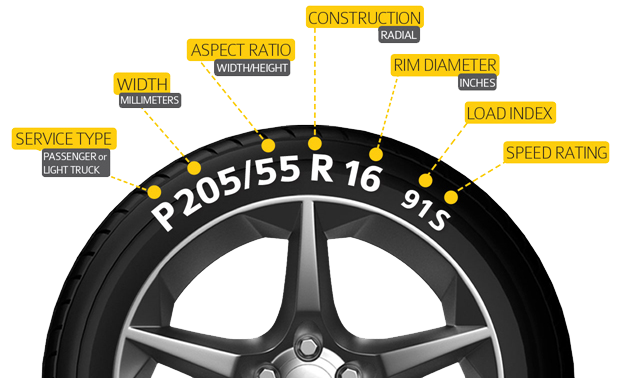

Ever notice the numbers on the sidewall of your tires and wonder what they mean? There is a lot to learn from these letters and numbers and by understanding them, a consumer can tell if a tire is right for their vehicle, their driving style, and the road conditions! Interested in cracking the tire code? This article is here to help you learn how to properly read and understand what is on your tire’s sidewall!
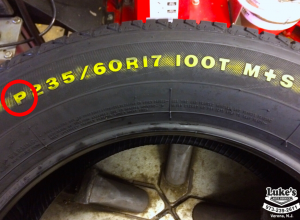
1. Tire Type
Most tire sizes begin with one or more letters which tells us what type of vehicle the tire was designed for. In the example to the left, the tire type is “P” or passenger vehicle.
P = Passenger Vehicle
-Most common type of tire
-Designed for cars, minivans, light-duty pickup trucks and SUVs
LT=Light Truck
-Designed for vehicles used to tow trailers or carry heavy loads such as SUVs, full-size vans and medium-duty/heavy-duty pickup trucks
-Generally require higher inflation pressures than passenger tires
T = Temporary Spare
-Designed for short-term use until the regular tire is repaired or replaced
ST = Special Trailer
-Designed for towing a car, boat or utility trailers
2. Width of the Tire
The first three digits tell us the tire width in millimeters measured at its widest part (not the tread). In the example to the left, the width is 235 millimeters. High-performance car tires tend to have a higher section width than lower-performance car tires.
3. Aspect ratio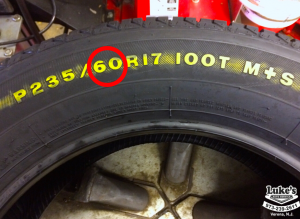
The two-digit number that follows the tire’s width is the aspect ratio, or the height of the sidewall from the wheel to tread relative to the width expressed as a percentage. In the example to the left, the 60 means that the height is equal to 60% of the tire’s width. The bigger the aspect ratio, the bigger the tire’s sidewall will be. Passenger vehicles with high aspect ratios generally have a softer ride than models with low aspect ratios.
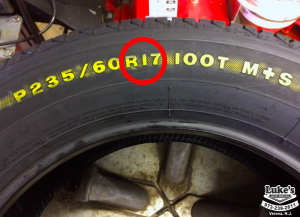 4. Construction / Wheel Size
4. Construction / Wheel Size
When a letter (either R, D, or B) follows the two-digit aspect ratio, it tells us the tire’s construction. Over 98% of all tires sold today are radial tires (R), where the internal body plies of the tire radiate outward from the center. D (bias-ply tires) and B (belted tires) are rarely seen today. The number group after the construction is the size of the wheel the tire fits. In our example to the left, the tire will fit a 17-inch wheel. When it reads R17, it means that it has a radial-ply construction and it fits a 17-inch rim. A tire can only be installed on a wheel that is identical to its inner diameter.
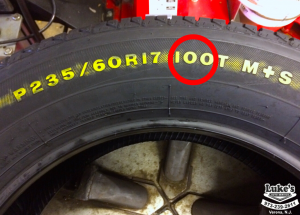 5. Load Index
5. Load Index
Did you know each tire has a maximum weight it can carry when properly inflated before it blows out? The two numbers after the wheel size is the tire’s load index. To the average car owner, this may seem irrelevant, but it plays a huge role when towing or hauling with a truck or SUV. The load index is per tire, so in our example, we have four tires with a 100 load index, meaning together, they can hold 7,056 pounds. How did we find that out? With a load index chart that we summarized below: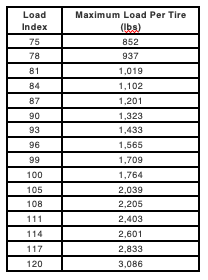
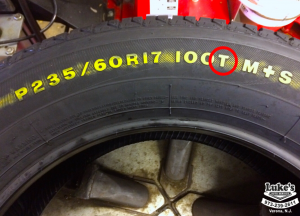 6. Speed Rating
6. Speed Rating
The final letter is the tire’s speed rating, or the maximum speed it is certified to safely be driven at when properly inflated and maintained. When you are replacing tires, the new tire’s speed rating should match or exceed the value listed in the vehicle’s owner’s manual to be safe. Speed ratings range from L (75 mph) to Y (186 mph). The tire in our example to the left has a speed rating of T, so it is certified to handle speeds of up to 118 mph. Similar to the load index, you need a chart to figure out what speed each letter translates to. Luckily, we have a speed chart below: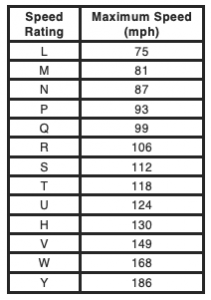
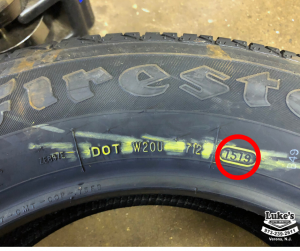 DOT Code
DOT Code
The Department of Transportation (DOT) number or tire identification number, is the longest string of numbers and letters on the tire. This number shows what factory the manufacturer built the tire and the week and year of when the tire was built. This date code is the last four digits of the DOT code (circled in the example to the left) and is extremely important as it tells you how old the tire is. The first two digits represent the manufacture week and the second two represent the manufacture year. In the example to the left, the tire has a date code of 1519, which means the manufacturer built it on the 15th week of 2019. After 5 years, tires should be inspected and after 10 years there is a good chance the compound has changed enough that the tire should be replaced.
What Grade Did You Get?
Just like restaurants, tires get a government-grade. You can spot these easily on the tire because before each grade is the word “Treadwear,” “Traction,” or “Temperature.”

Treadwear Grade
Treadwear is a three-digit number that indicates how long tread on the tire will last relative to other tires. In similar conditions, the tire in the example to the left should last 5.6 times as long as one with a 100 rating, as a tire with a 300 treadwear rating should last three times as long, and so on. Since each manufacturer does its own testing in a controlled environment, treadwear marks generally should not be compared from tire maker to tire maker. The newer models of minivans and pickups go through tires faster than other cars because of the amount of power they have.
Traction Grade
The traction rating represents how well the tire performs on wet asphalt and concrete. The ratings from best traction to worst are AA, A, B, C and all tires sold in the U.S. must earn at least a “C” grade. The tire in the example above is an “A” grade, meaning it performs well in wet conditions.
Temperature Grade
The temperature rating indicates the tire’s ability to disperse heat while operating at high speed. The tire in the example above has a “B” temperature grade. Tires come in one of three temperature ratings:

Other Tire Markings
Lastly, there are some other markings on the tire sidewall that consumers should pay attention to.
Snowflake in Three-Peak Mountain / M+S (Mud and Snow):
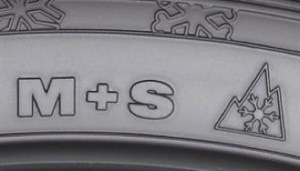
-means those tires are designed for use in severe winter conditions
-able to handle both snowy, slippery roads and low temperatures.
“Snail” Symbol:
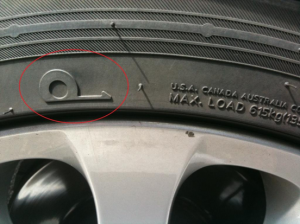
-means that it is a run-flat tire that can be driven on at reduced speed, even if it has lost air
-more common nowadays as manufacturers eliminate spare tires to save weight and improve fuel economy
Arrow:
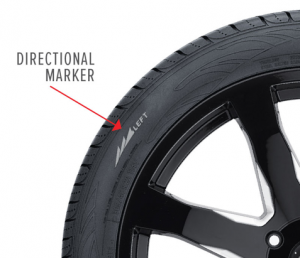
-denotes that a tire has a directional design
– when correctly mounted, the arrow points toward the front of the vehicle
-If directional tires get mounted backward, you won’t get the hydroplaning resistance and other performance driving benefits the tire is designed for
If you are in the market for new tires, call Luke’s Auto Service in Verona, New Jersey. We will inspect your tires and advise you on what tire is a good fit for you and your car. Keep in mind, on all-wheel-drive vehicles, all four tires need to be replaced at the same time. Schedule an appointment today!
References/Image Credits:
https://cars.usnews.com/cars-trucks/what-do-the-numbers-on-tires-mean
https://www.goodyearautoservice.com/en-US/tire-basics/tire-size
https://www.expressoil.com/tire-information/
https://www.lesschwab.com/article/what-are-directional-tires.html
https://www.4x4community.co.za/forum/showthread.php/76040-What-does-this-symbol-mean
